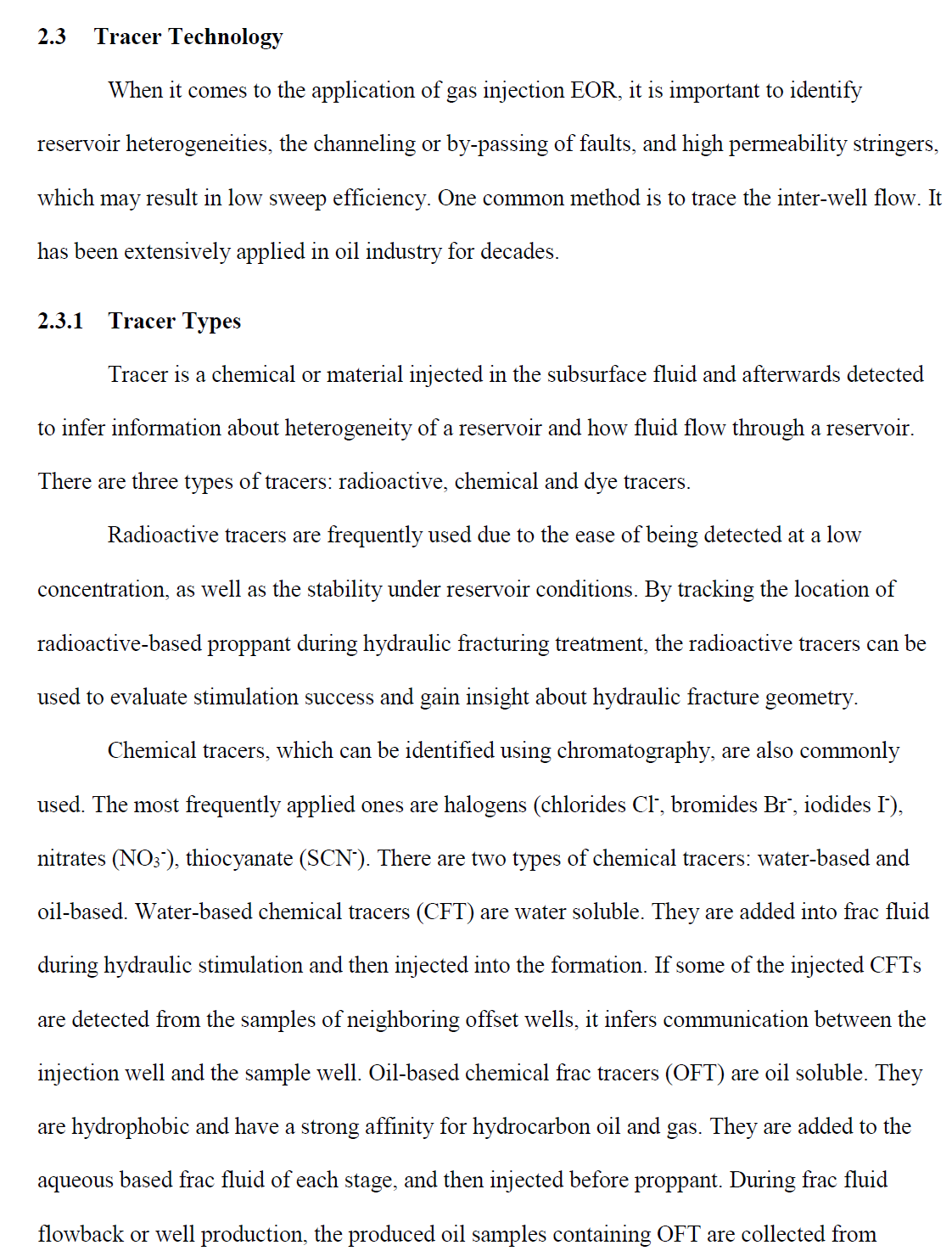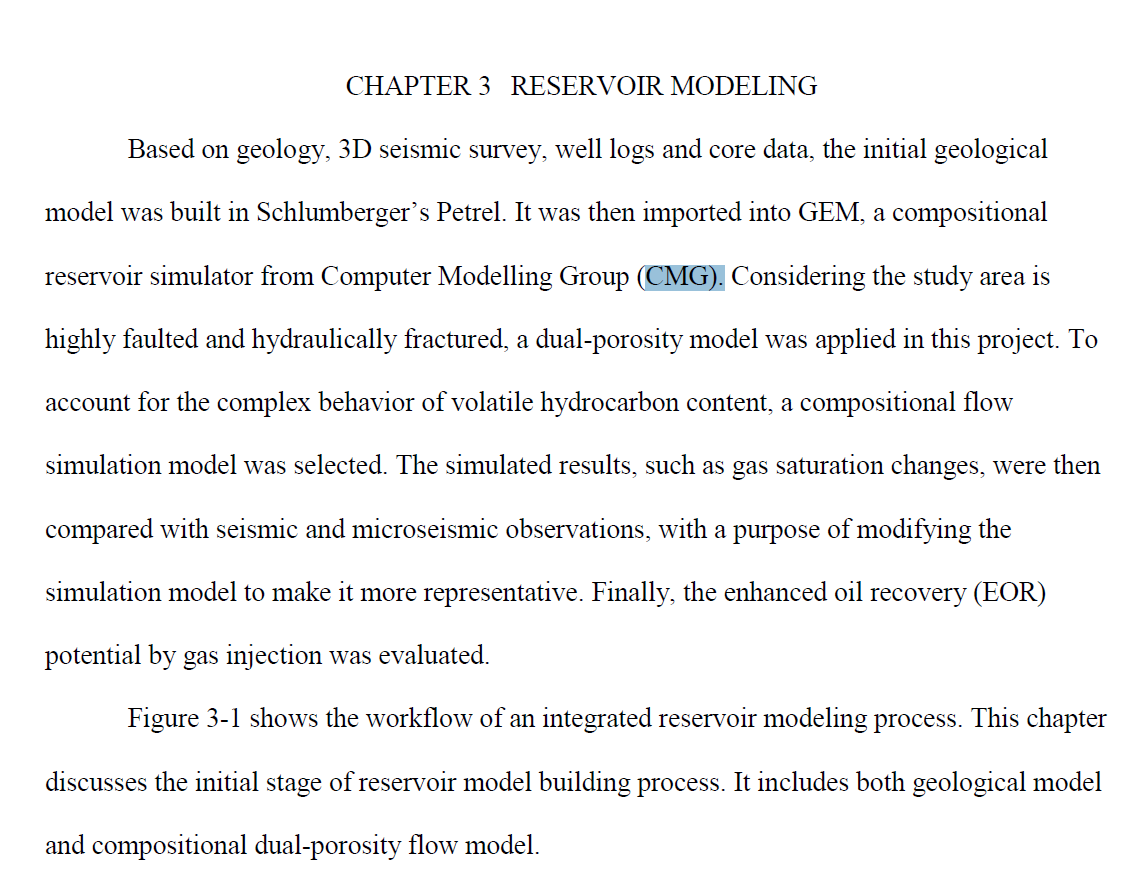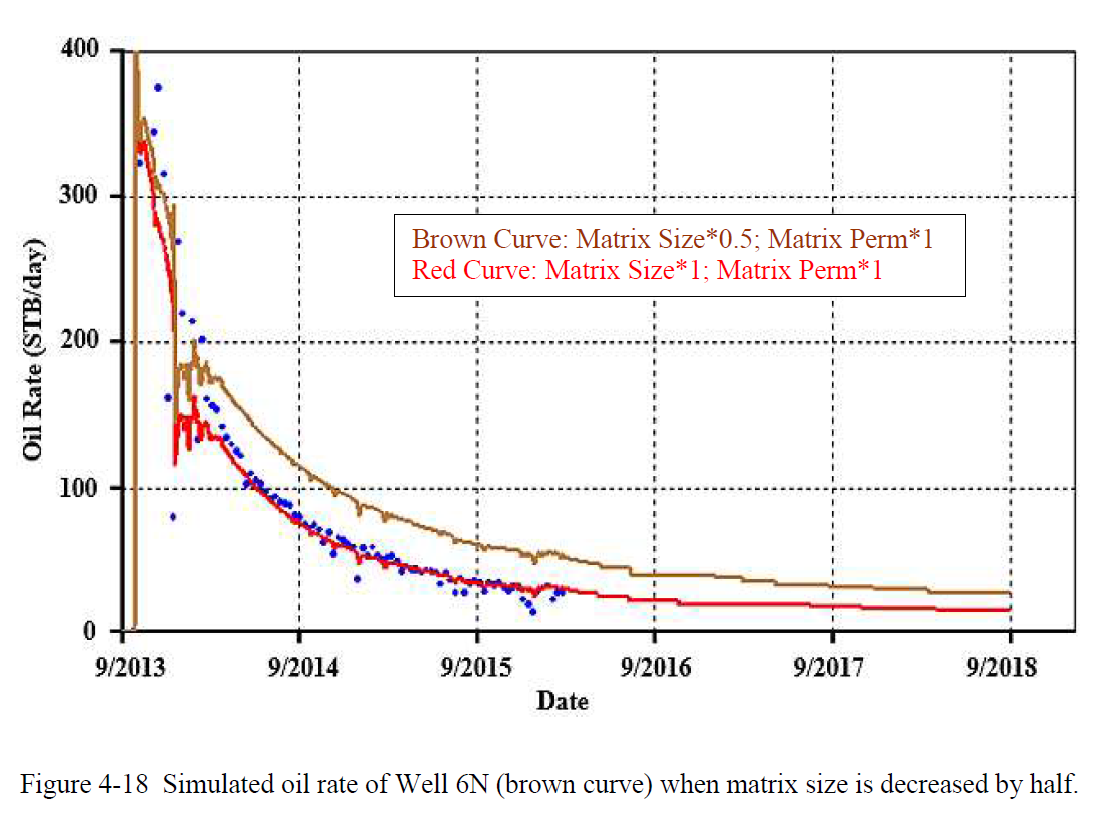本研究的目的是建立一个组分模型,以评估位于科罗拉多州丹佛-朱尔斯堡盆地(DJ盆地)的Niobrara和Codell的这两个区域生产效果。研究区域称为Wishbone一个平方英里范围,包括11口水平井,生产于2013年9月开始。在11口水平井钻井前、水力压裂后和两年生产后进行了地震基线、监测1和监测2调查。研究区高度复杂:致密且高度非均质的储层、存在断层以及轻烃组分。为了建立一个真实的模拟模型,开发了一个一体化的工作流程,其中包括来自地质、地球物理、岩石物理、完井和生产的数据。
储层模型油气流体数据是根据几份综合油气PVT报告编制的。这些数据根据每日油井产量和压力记录的信息补充。将GOHFER的水力压裂解释结果导入到数值模拟模型中。历史拟合完成后,使用四种方法对模型进行验证。首先,根据实际生产数据和模拟结果进行了不稳定分析。研究发现,两种情况下计算的储层渗透率相似,验证了模拟模型的正确性。其次,从东到西,油井的产出气油比(GOR)增加。裂缝系统中模拟的气体饱和度分布与GOR一致,这也增加了该模拟模型的可信度。第三,微地震簇表明裂缝密度增加,这与较高的含气饱和度带相关。类似地,微震事件频率较低的区域与较低的含气饱和度区域一致。第四,为了将储层模型与地震响应相结合,最重要的观测结果是裂缝系统中的自由气演化。
PRODUCTION POTENTIAL OF NIOBRARA AND CODELL: INTEGRATING RESERVOIR SIMULATION WITH 4D SEISMIC AND MICROSEISMIC INTERPRETATION
Abstract
The objective of this research was to build a compositional model to evaluate current and future production performance of Niobrara and Codell, which are the targeted zones in the Wattenberg Field located in Colorado’s Denver-Julesburg Basin (DJ Basin). The study area is called Wishbone section. It is a square-mile section that includes eleven horizontal wells. The production began in September 2013. The seismic Baseline, Monitor 1, and Monitor 2 surveys were conducted before the eleven horizontal wells were drilled, after hydraulic fracture stimulation, and after two years of production. One thing that needs attention is the complexity of the study area: the tight and highly heterogeneous reservoir, the existence of faults, and the light hydrocarbon content. To build a realistic simulation model, an integrated workflow was developed, which includes data from geology, geophysics, petrophysics, completion and production. The geologic input data were obtained from seismic and well log interpretations.
The reservoir model hydrocarbon fluid data were prepared from several comprehensive oil and gas PVT reports. These data were complemented with information from daily well production and pressure records. The hydraulic fracturing interpretation results from GOHFER were imported into the flow simulation model to describe well performance. After history matching was done, four methods were used to validate the model. First, rate transient analysis was conducted based on both actual production data and simulated results. It was found that the reservoir permeability calculated from both cases are similar, which verifies the simulation model. Second, the producing gas-oil ratio (GOR) is increasing for wells from east to west. The simulated gas saturation distribution in the fracture system is consistent with GOR performance, which also adds credibility to this simulation model. Third, microseismic clusters suggest increased fracture density, which correlate with higher gas saturation zones. Similarly, the zones that have less frequency of microseismic events are consistent with the lower gas saturation areas. Fourth, to integrate the reservoir model with seismic responses, the most significant observation was the free gas evolved in the fracture system.
The P wave impedance difference between Monitor 2 and Baseline surveys show negative value in the western side, which is consistent with the higher gas saturation observed from the flow simulation model. Thus, the reservoir model credibility was substantiated by the agreement among actual gas production, modeled gas saturation, microseismic events and 4D seismic responses. After the model was validated, a portion of the produced rich gas was injected into a Niobrara well and a Codell well separately to evaluate the enhanced oil recovery (EOR) potential. The results were confirmed by the tracer data analyses, which indicate strong inter-well and inter-formation communication. For instance, when gas was injected into a Niobrara well, the oil production of a nearby Codell well was more enhanced than its neighboring Niobrara wells. The modeled gas injection EOR yielded 2% – 4% incremental oil during a production period of 15 years. This indicates a strong likelihood of EOR potential in unconventional fields by wet gas injection. Considering the geologic complexity of the study area, the modeling study is a powerful tool for understanding the flow mechanism in shale formations of the DJ Basin. Furthermore, the modeling study provides a great insight to the stake holders involved in assessing the EOR potential in the DJ Basin unconventional reservoirs.






